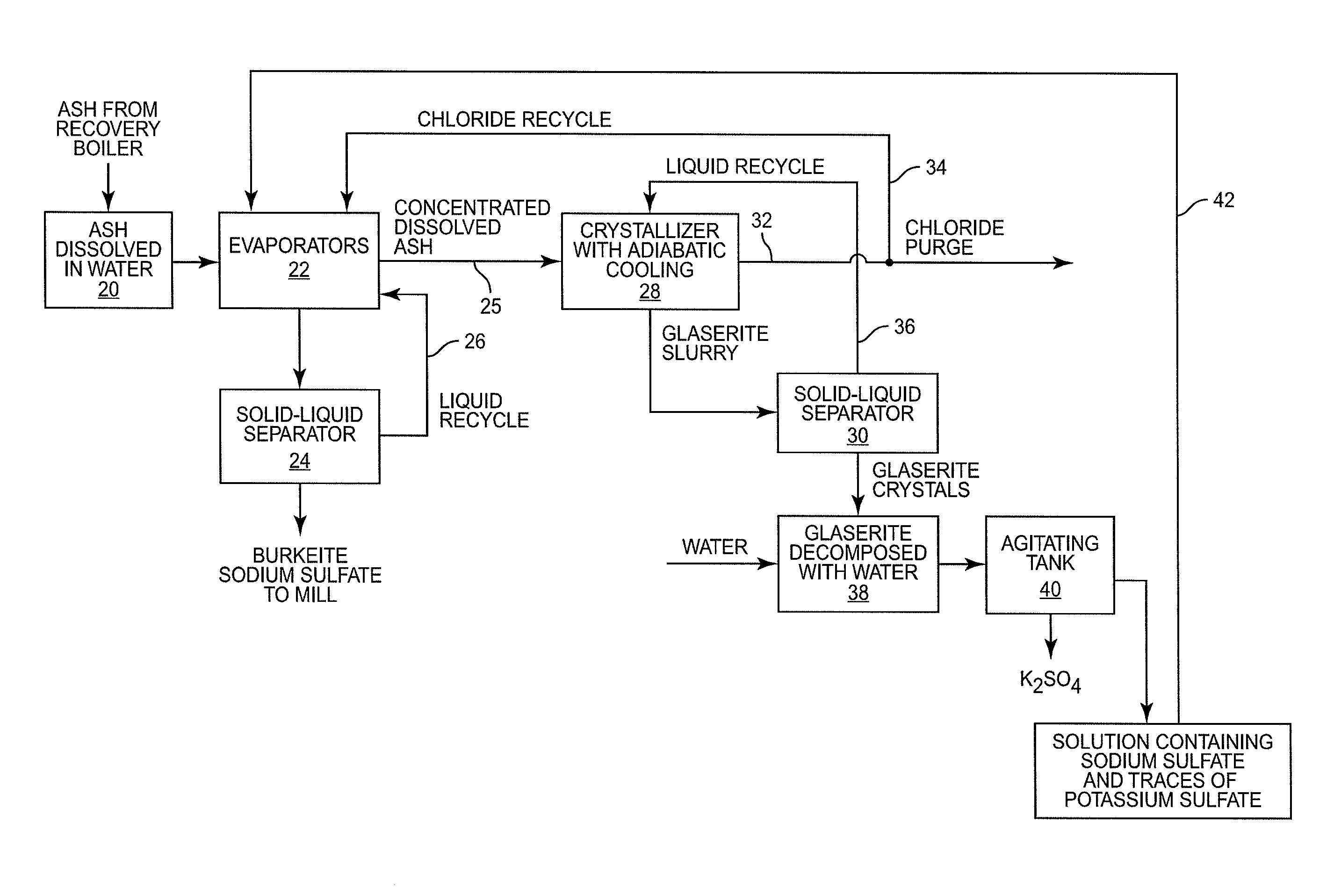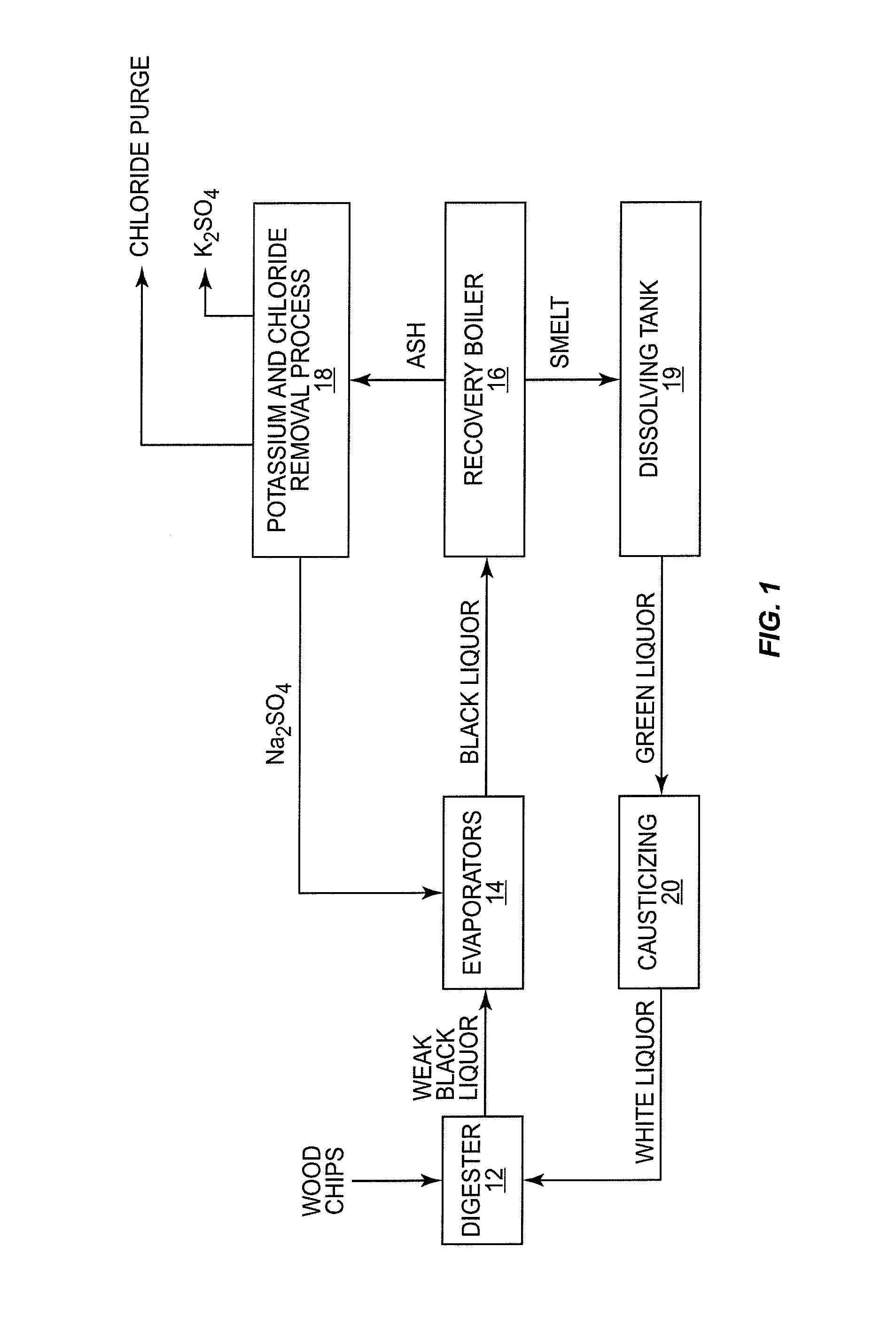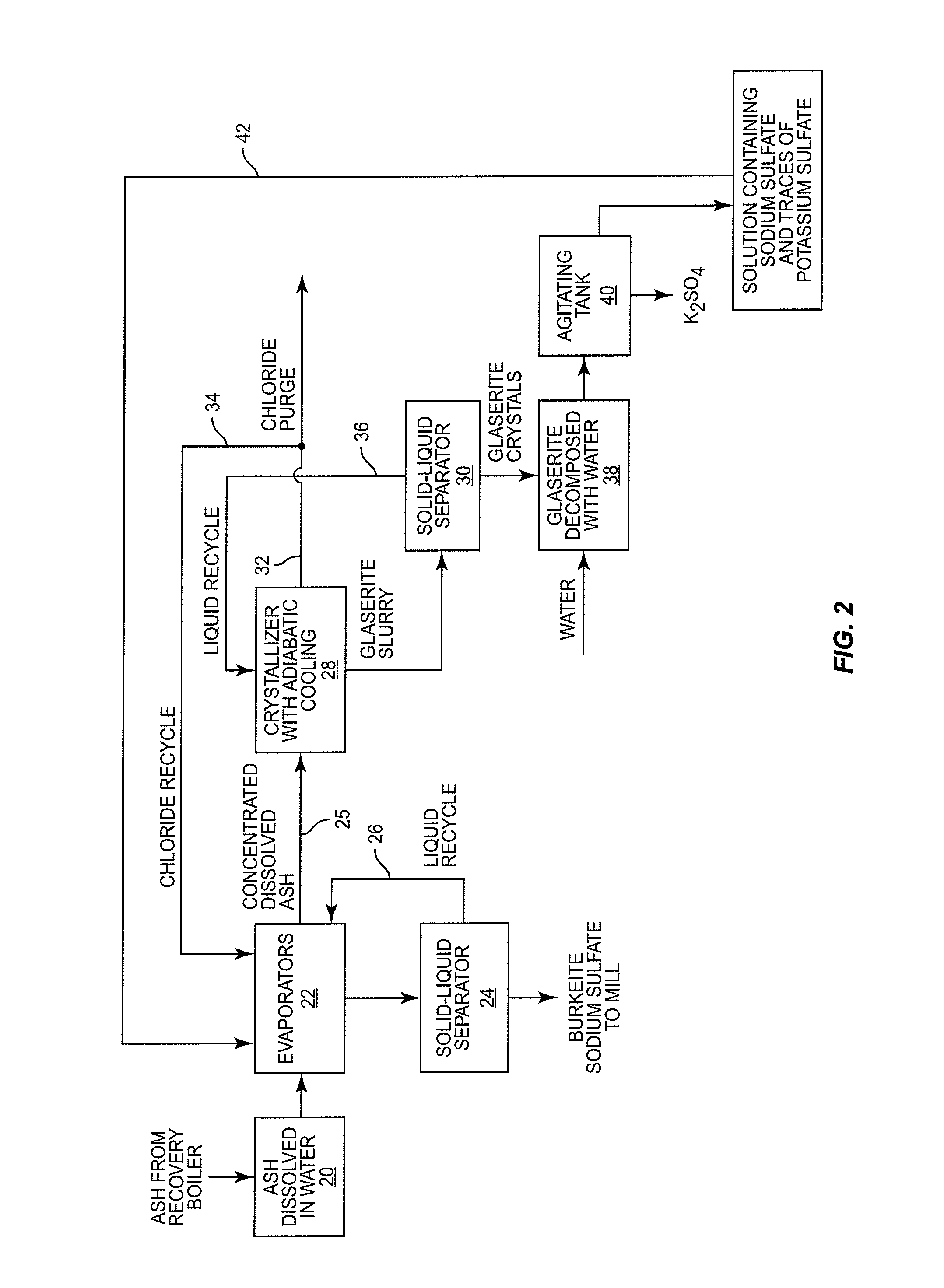CRP Purge Treatment
a technology of pulping chemicals and purge treatment, which is applied in the field of pulping wood, can solve the problems of too low combustion rate, low melting temperature of fly ash deposits, and negative impact of potassium (k) on the operation of chemical recovery processes in pulp mills
- Summary
- Abstract
- Description
- Claims
- Application Information
AI Technical Summary
Benefits of technology
Problems solved by technology
Method used
Image
Examples
Embodiment Construction
[0015]With reference to FIG. 1, there is shown therein a method for removing pulp from wood and recovering pulping chemicals. As will be discussed herein, the chemical recovery process includes process units or elements that reduce the concentration of chloride and potassium commonly found in the black liquor produced by pulping wood.
[0016]Referring to FIG. 1, wood chips are directed into a digester 12. The wood chips are mixed with pulping chemicals typically referred to as white liquor. The white liquor contains sodium hydroxide (NaOH) and sodium sulfide (Na2S). Digester 12 is operated under pressure and, in a typical process, the wood chips are cooked at a temperature on the order of 160-180° C. White liquor in the digester neutralizes the organic acids in the chemical matrix of the wood. Lignins and other organic material dissolve into the white liquor. The remaining material is pulp or wood fiber used in the papermaking process. The white liquor is discharged from the digester ...
PUM
| Property | Measurement | Unit |
|---|---|---|
| Temperature | aaaaa | aaaaa |
| Concentration | aaaaa | aaaaa |
| Crystallization enthalpy | aaaaa | aaaaa |
Abstract
Description
Claims
Application Information
 Login to View More
Login to View More - R&D
- Intellectual Property
- Life Sciences
- Materials
- Tech Scout
- Unparalleled Data Quality
- Higher Quality Content
- 60% Fewer Hallucinations
Browse by: Latest US Patents, China's latest patents, Technical Efficacy Thesaurus, Application Domain, Technology Topic, Popular Technical Reports.
© 2025 PatSnap. All rights reserved.Legal|Privacy policy|Modern Slavery Act Transparency Statement|Sitemap|About US| Contact US: help@patsnap.com



